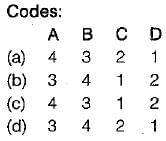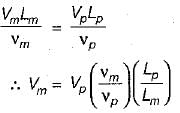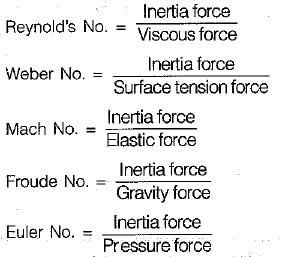Test: Dimensional & Model Analysis - 1 - Civil Engineering (CE) MCQ
10 Questions MCQ Test GATE Civil Engineering (CE) 2026 Mock Test Series - Test: Dimensional & Model Analysis - 1
Euler number or pressure coefficient may be represented as (notations have their usual meanings)
A spillway of an irrigation project is to be studied by means of a model constructed to a scale of 1 : 9. The prototype discharge is 1000 m3/s. Neglecting the viscous and surface tension effects, the required flow rate for the model is
Match List-I (Equation/Principie) with List-ll (Property) and select the correct answer using. the codes given below the lists:
List-I
A. Energy equation
B. Continuity equation
C. Moment of momentum principle
D: Impulse-momentum principle
List-ll
1. Force on a moving vane
2. Lawn sprinkler
3. Pressure at a point in a pipeline
4. Flow at two sections of a tapering pipe

List-I
A. Energy equation
B. Continuity equation
C. Moment of momentum principle
D: Impulse-momentum principle
1. Force on a moving vane
2. Lawn sprinkler
3. Pressure at a point in a pipeline
4. Flow at two sections of a tapering pipe

The distorted models, used in the hydraulic studies, are those which
A 1: 30 scale model of a submarine is to be tested in a wind tunnel for its drag when it is operating at 15 km/h in ocean. The kinematic viscosity of air is 1.51 x 10-5 m2/s and for water 1.02 x 10-6 m2/s. What is the velocity of air in wind tunnel that should be maintained for kinematic similarity?
In model similarity, if gravitational and inertial forces are the only important forces, then what is the discharge ratio?
where Lr = ratio of length dimension.
An orifice is discharging under a head of 1.25 m of water. A Pitot tube kept at its centre line at the vena contracta indicates a heap of 1.20 m of water. The coefficient of velocity of the orifice is
The geometrical similarity between model and prototype is achieved by
Froude number is the ratio of inertia force to
|
31 docs|280 tests
|




























